YPSILON® is a yield prediction service for key growing areas in Europe. It is based on the latest satellite imagery and plant growth modelling. Weekly updates of the predicted yield for wheat, rapeseed and maize are delivered from 8 weeks before harvest.
Among others, satellite imagery, weather data, soil, topography, and agricultural statistics are used for yield forecasting
In order to deliver relevant and up-to-date forecasts, cutting edge cloud technologies are implemented in the remote sensing processing chain
Up to date satellite images and weather data are integrated into a physical crop growth model for yield prediction in tons per hectare
The main target group for the European YPSILON® service are traders and trading companies, whereas the German service as well as the custom service, with an individually selectable region, are of special interest for mills, regional trading companies, seed growing companies, biogas plant operators or agro holdings. Further information can be found in our product sheet








Ypsilon helps us to identify deviations in advance and thus enables us to react in good time. Storage capacities and logistics are adjusted which leads to an optimization of our production chainsElisabeth Becker
By using Ypsilon’s yield forecast we identified 2018's crop failure six weeks before the rest of the market. Ypsilon helped reducing our purchasing costs significantly!CEFETRA
Feb 2024
Munich, February 2024 – Vista GmbH, a subsidiary of BayWa AG, is once again using state-of-the-art technology to analyze how the Russian war of aggression is affecting agricultural production in Ukraine in the second year of the war. Among other things, almost 7% of the cultivated area is no longer used for agriculture and the course of the front is clearly visible on the cultivation maps.
Vista is also analyzing how the Russian war of aggression is affecting agricultural production in Ukraine in the second year of the war. This was made possible with funding from the European Space Agency and BayWa AG, among others.
The cultivation of spring and winter barley, grain maize, rapeseed, sunflower and wheat was observed. With the help of satellite data, among other things, the Vista scientists determine which crops were grown in which region and on which area. The PROMET physical plant growth model developed by Vista allows detailed forecasts to be made on the yields of the observed fruits.
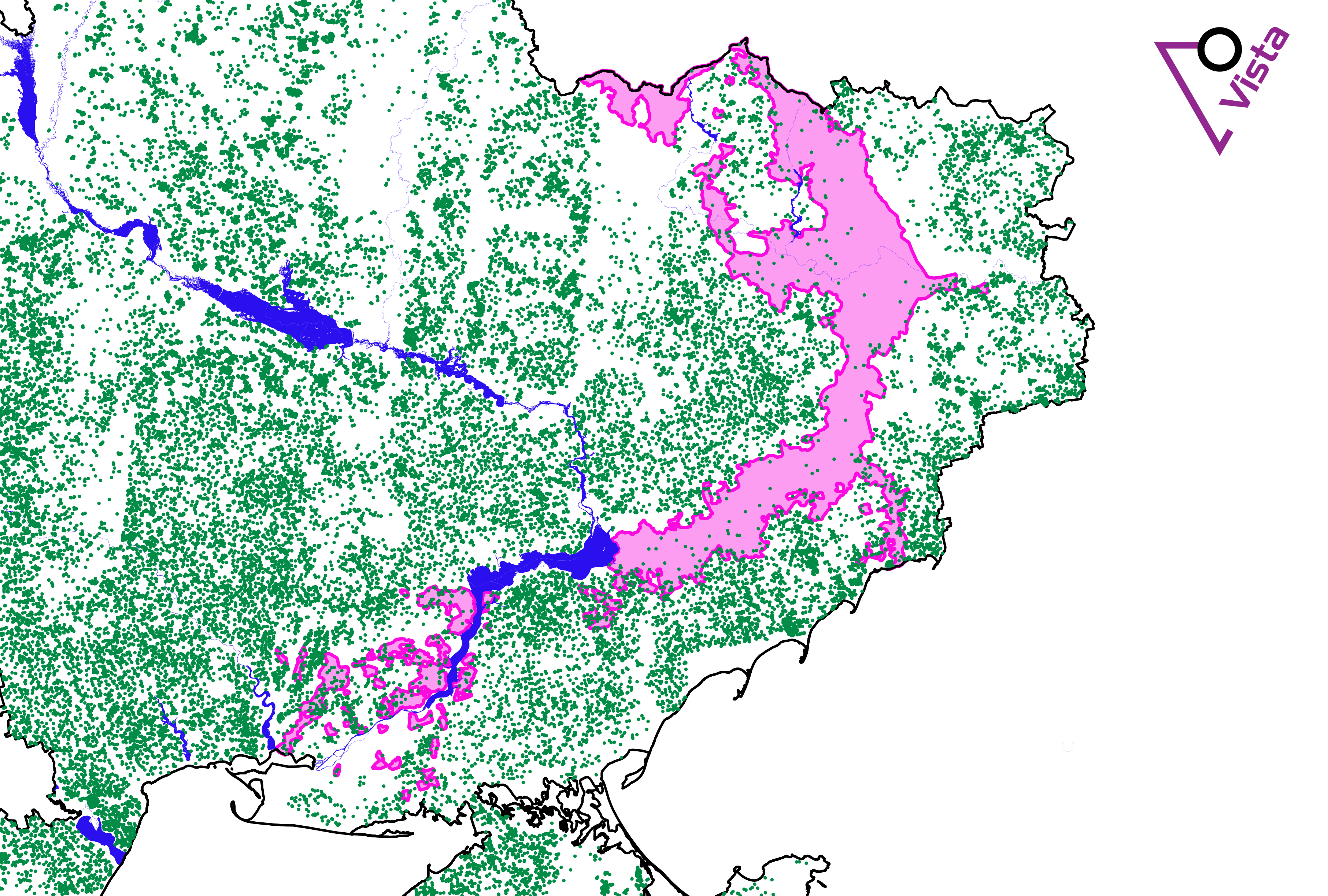 Agricultural use in the Zaporizhzhya oblast: The vegetation in the front area is developing, but is not used for food production.
Agricultural use in the Zaporizhzhya oblast: The vegetation in the front area is developing, but is not used for food production.
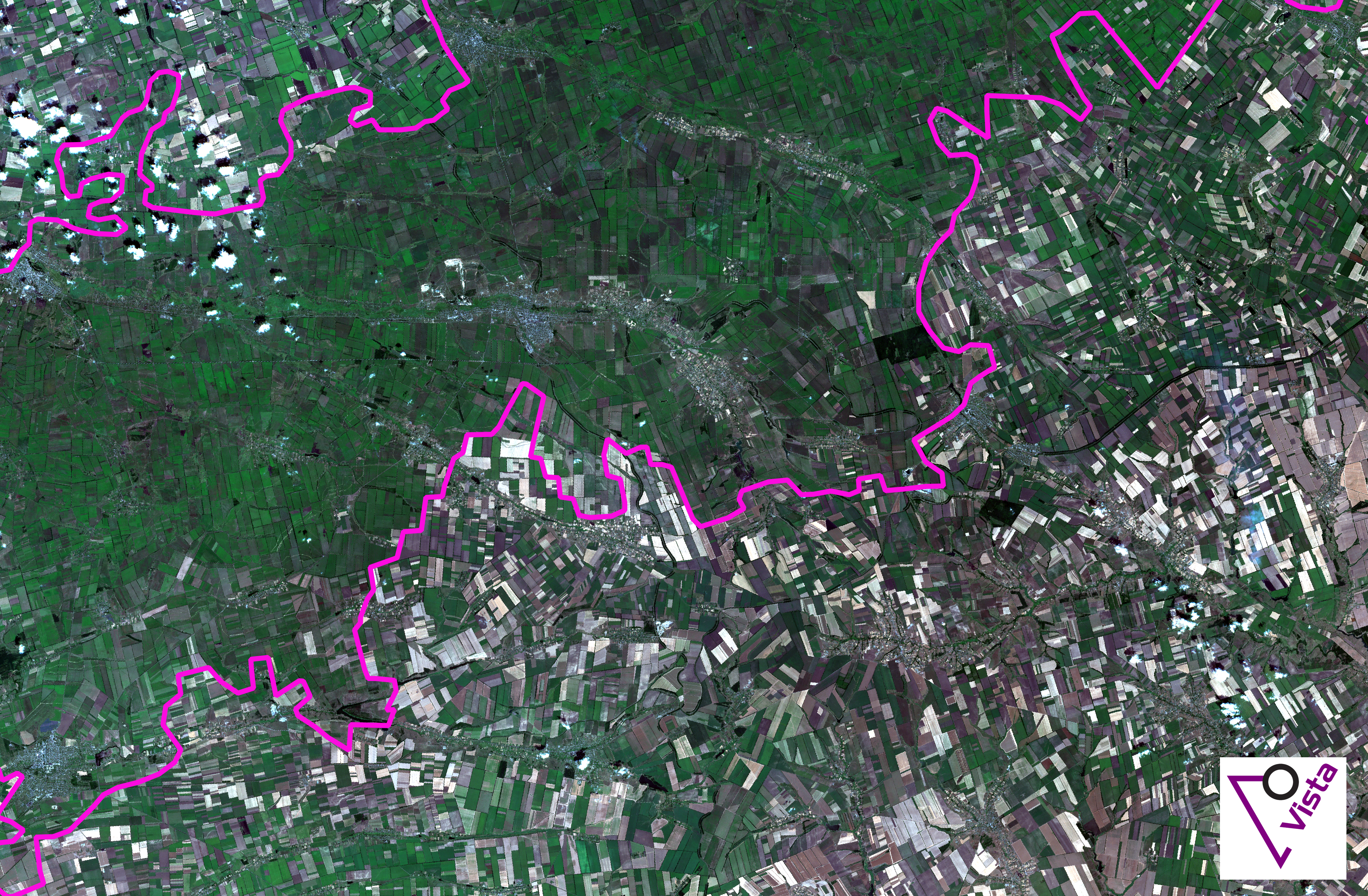 A green dot represents a harvested field. Last year, around 6.5 percent of the former agricultural land along the front line fell out of use.
A green dot represents a harvested field. Last year, around 6.5 percent of the former agricultural land along the front line fell out of use.
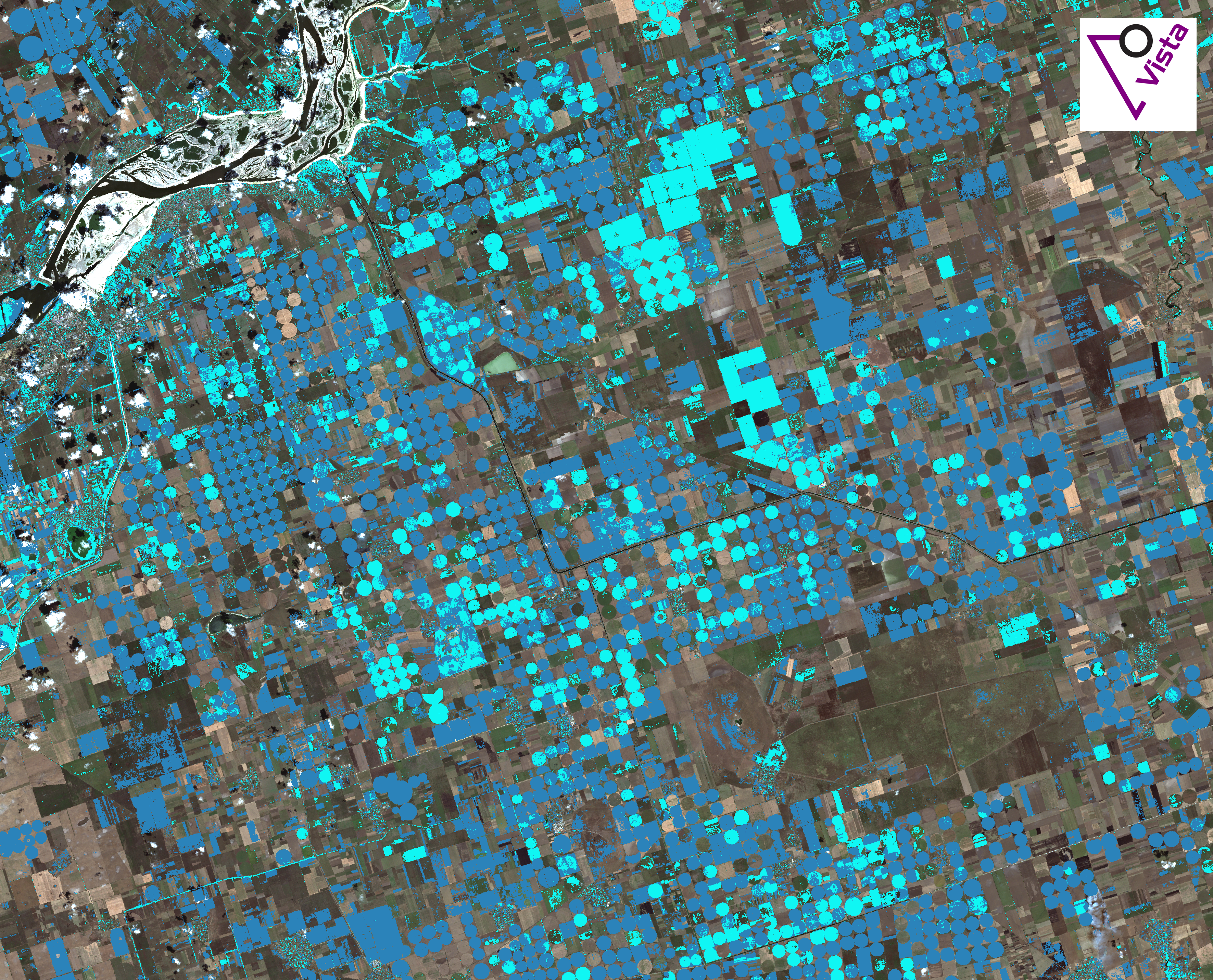 Comparison 2021 (dark blue) and 2023 (light blue) Number of artificially irrigated areas in Kherson oblast: Due to the dam blasting, the proportion of irrigated areas decreased by 52 percent.
Comparison 2021 (dark blue) and 2023 (light blue) Number of artificially irrigated areas in Kherson oblast: Due to the dam blasting, the proportion of irrigated areas decreased by 52 percent.
Jun 2023
Munich, June 30, 2023 - Climate change is altering land management.
dry periods in particular are causing problems for arable farming. But not all droughts are the same. The complex interplay of precipitation, soil moisture and plant growth is crucial for agriculture when it comes to harvesting.
Crop year 2023: Despite wet spring, drought stress in June leads to losses
This year, crops – especially winter wheat had sufficient water until mid-May.
High precipitation in the spring created a good starting for plant growth. A comparison with the average of the past five years also shows that cereal crops in 2023 had fewer water problems by the end of May.
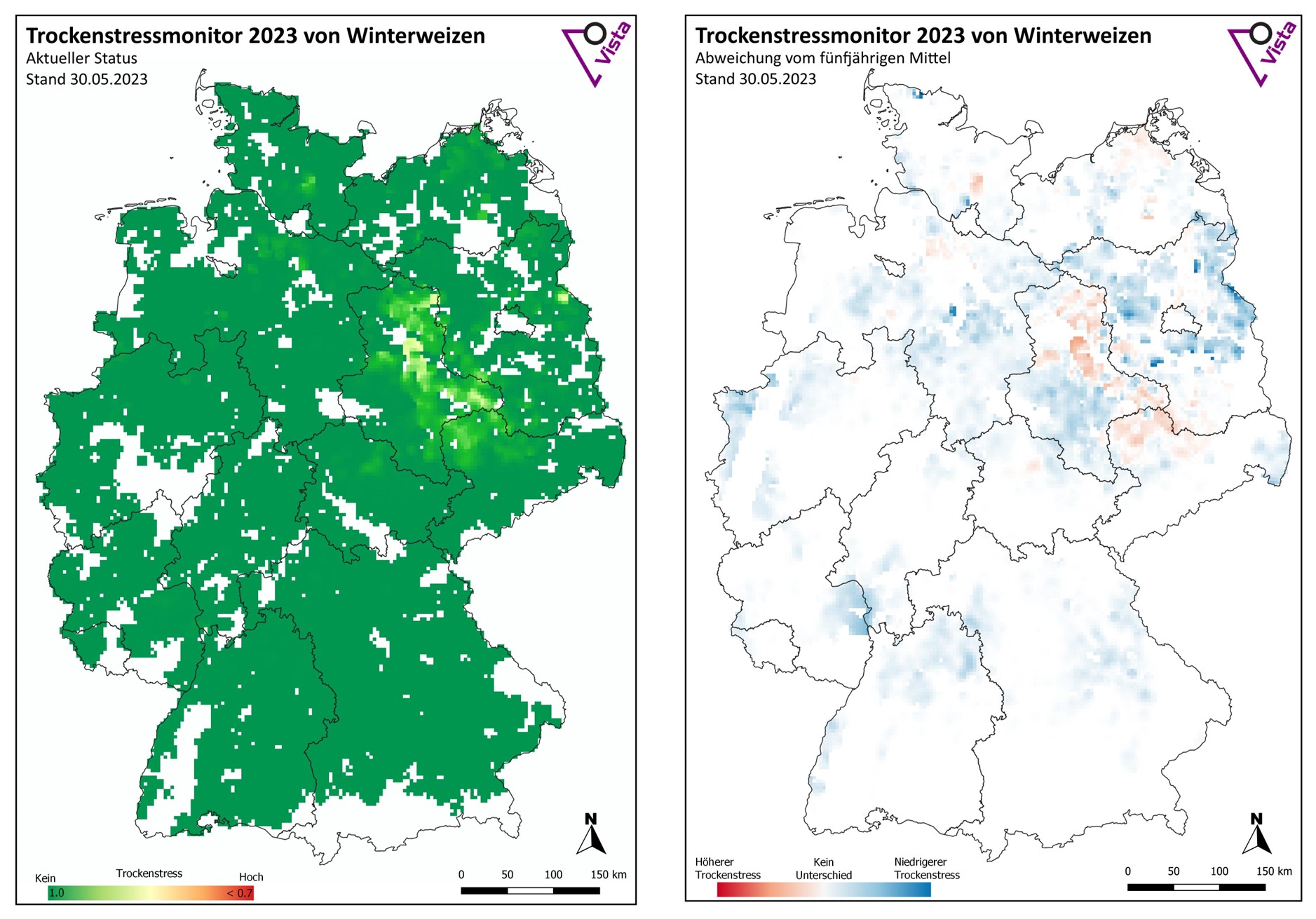
The graph on the left shows winter wheat drought stress averaged over the past 10 days as of the date shown. The graph on the right compares the data to the average for the same period over the past five years.
However, the current data at the end of June 2023 looks different. The very warm and dry weeks since mid-May hit winter wheat at a critical stage of plant growth. Especially in grain formation after flowering, wheat needs a lot of water, and temperatures should not exceed 30 degrees. Despite a good starting situation in spring, wheat is now under higher drought stress than the average of the previous five years. Experts at Vista GmbH are therefore expecting a drop in the winter wheat harvest: a decline of 6 percent is forecast for Germany as a whole. Regionally, the assessment is even worse.
This year, the dry weeks have hit agriculture particularly hard in the regions of Schleswig-Holstein, Mecklenburg-Western Pomerania, Rhineland-Palatinate, Baden-Württemberg and Bavaria. There, Vista experts expect yield losses of up to 17 percent.
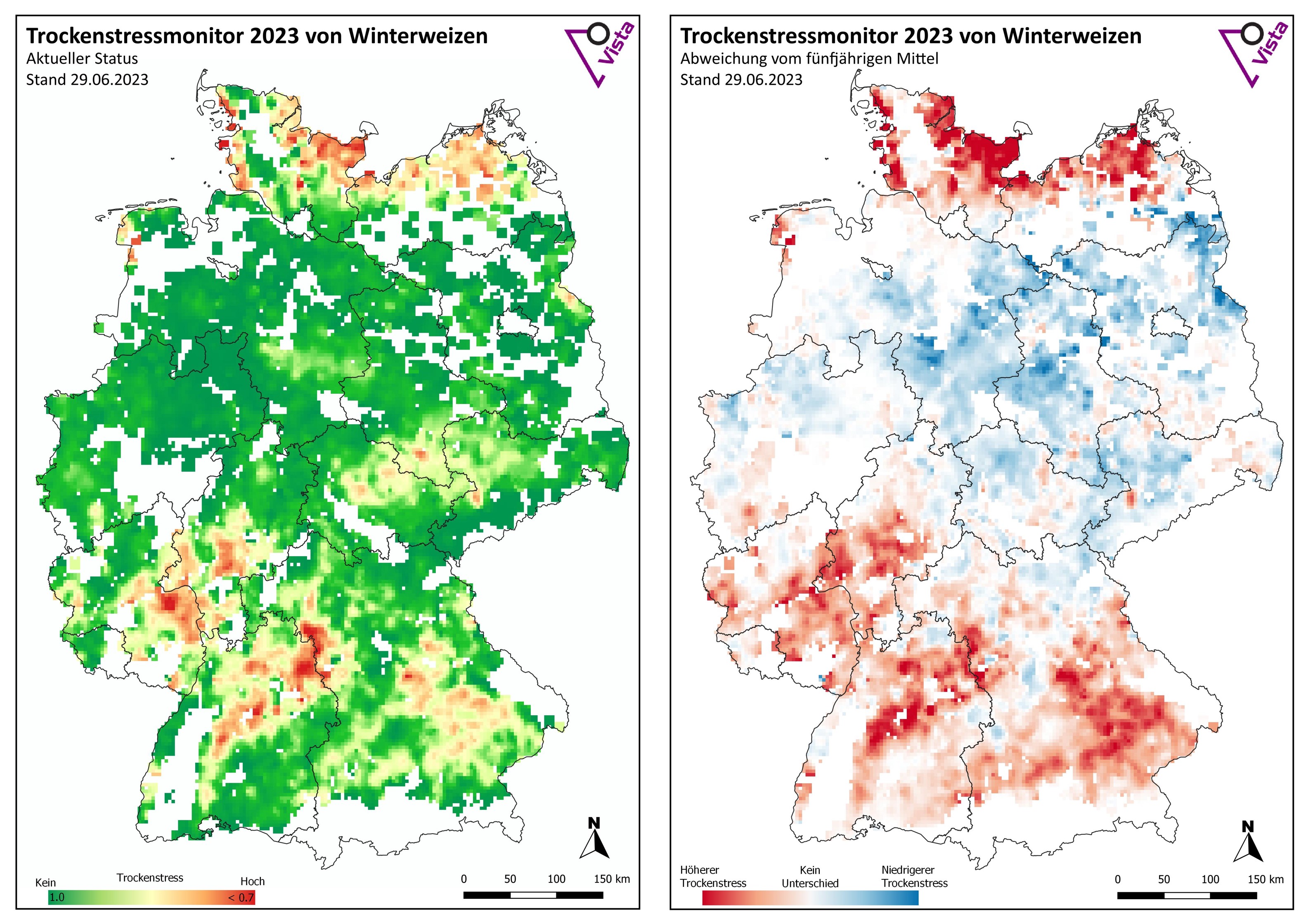
Aug 2022
The sight of the corn fields this year is a sad one. Not only for experts it is clearly visible: the harvest will be extremely poor.
Our Ypsilon Yield Prediction Service backs this up with numbers: In many places, a drop in yield of more than 50% compared to the long-term average is to be expected for grain maize. There are only a few districts - especially in the very south of Germany - that will be able to record a plus.
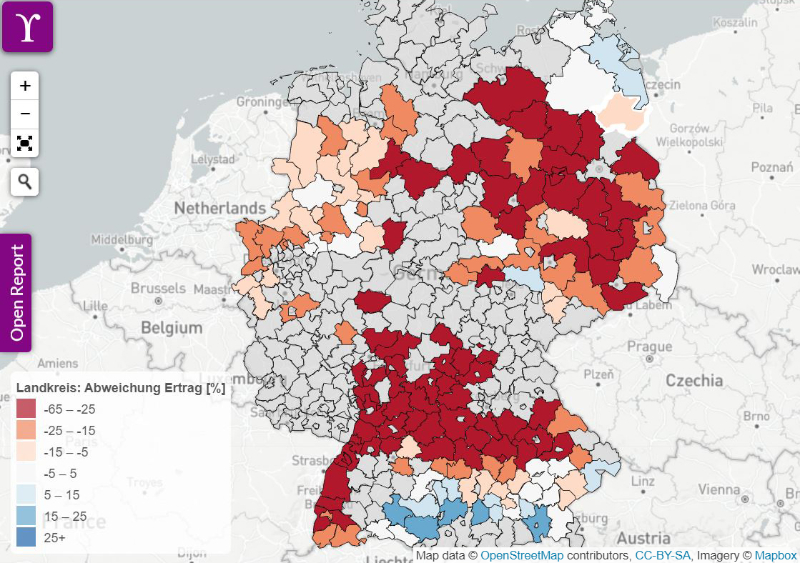
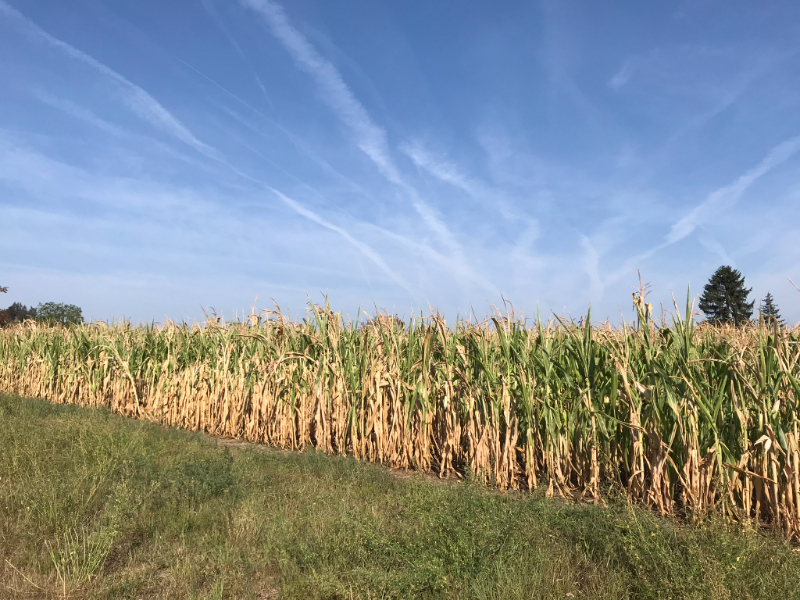
Jul 2022
At the harvest press conference of the Bayerische Bauernverband (Bavarian Farmers' Association), farmers, the press and Minister of Agriculture Kaniber were able to see for themselves the quality of our results from the Ypsilon Yield Prediction Service for Bavaria at district level. Our managing director Dr. Heike Bach presented the service and the specific figures for Bavaria. The current Ypsilon forecast for the region matches the results of the event's host farmer's first harvest.
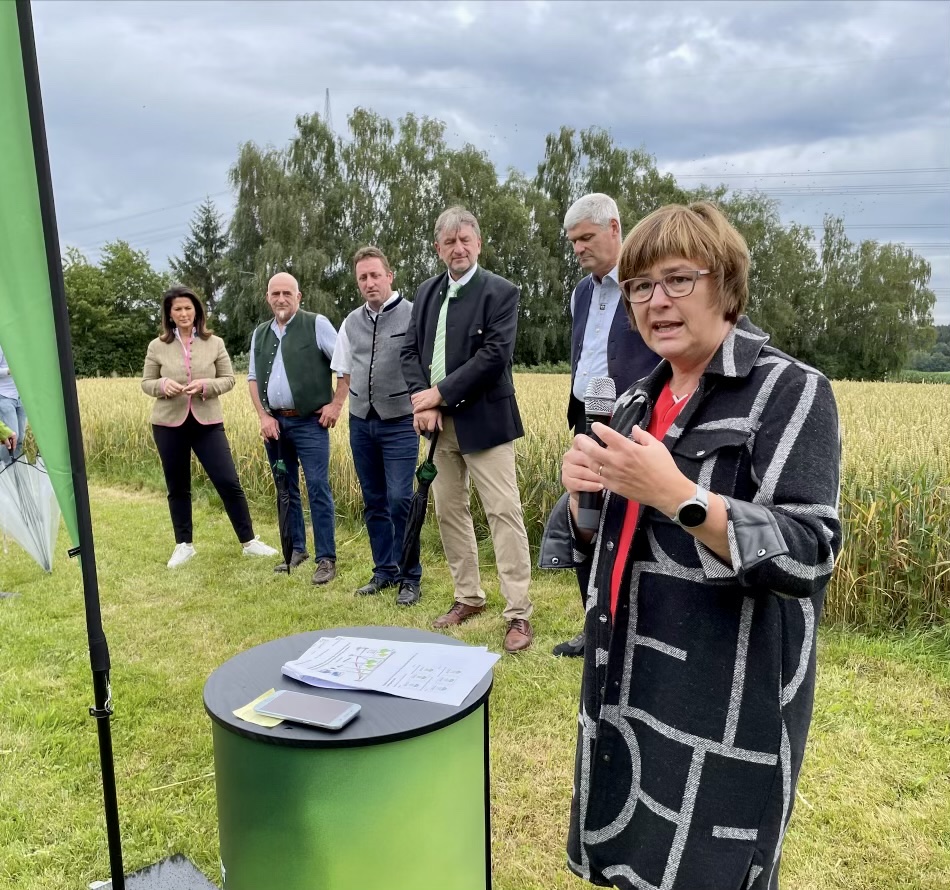
Jun 2022
22.48 million tons of bread wheat are currently ripening in the fields of Ukraine for this year's harvest. Compared to the average of the past four years, this means a decrease of 17 percent. Professor Klaus Josef Lutz, CEO of BayWa AG: “The data shows that a below-average harvest can no longer be avoided. This is a catastrophe, especially for the people in the world’s poorest countries.The world market will be lacking 20 million tons of wheatt. Parts of the world will starve. Without the opening of the ports, grain will not get out of the country. Intermediate storage is unavoidable, because overland transport capacities are not an alternative.” The full press release is available here.
Dec 2021
Even under this year's very challenging cultivation conditions, VISTA's satellite-based forecasting service YPSILON® proved its reliability and strengths: While the official statistics only gradually corrected their forecasts upwards - e.g. for the harvest of grain maize - YPSILON® forecast a comparatively high yield potential of between 10.5 and 11 t/ha for grain maize as early as August, while at the same time showing significantly delayed maturity
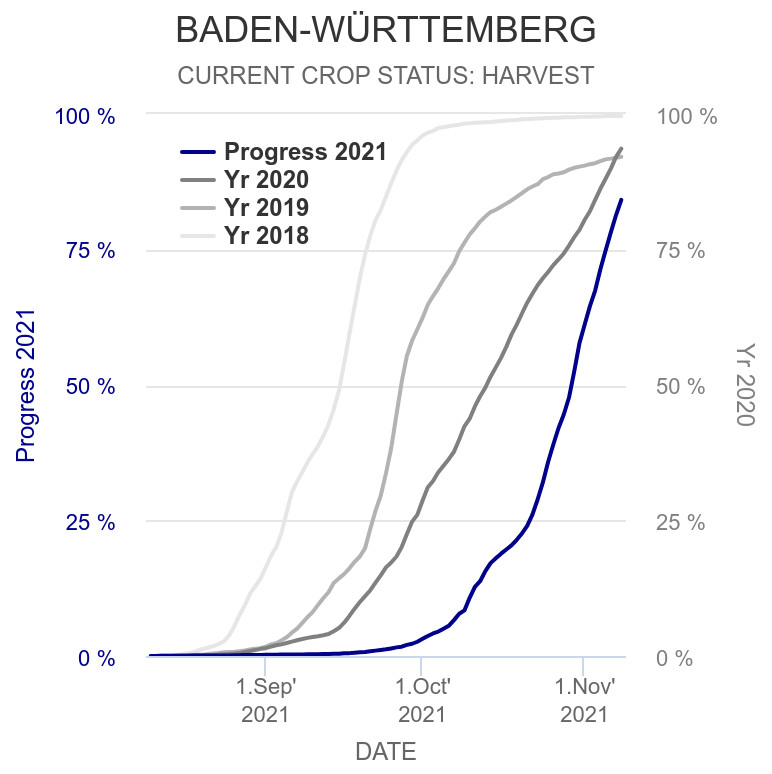
The press release can be found here. For a more in depth look to our results, just visit our interactive map here
Oct 2021
The COVID-19 pandemic's far-reaching national and international impacts are well known and often hard to
quantify. In our study, "Impact of COVID-19 on Harvest of Row Crops", funded by the European Space Agency
ESA, we quantified when harvest occurred in 2020 and whether there were significant delays due to COVID-19.
For this purpose, 200.000 fields of summer crops, winter cereals and winter rapeseed in 19 European
countries were sampled and processed by our algorithm.
For this, we estimated the harvest period with an accuracy between one and five days by using coherence and
backscatter data generated from the Sentinel-1 mission, which consists of two SAR satellites. To quantify
the potential delay of the harvest, the harvest dates derived with radar are compared with our extensive big
data analysis framework YPSILON®. YPSILON® describes the perfect time of harvest based on the observed
phenological phase of the plant and the current weather conditions.
Thus, a later harvest date derived according to the radar data means a delay in harvesting. The result for
winter cereals is shown in the map as percentage of delayed harvest events at the expected end of season in
the several countries. In the countries Spain, Great Britain and in western Hungary delays of harvest of
winter cereals are observed. All three countries were comparatively hard hit by COVID-19 across Europe in
2020, but not necessarily at the time of winter cereal harvest. The maximum COVID-19 14-day-incidence in the
considered harvest period for each country is also visualized in the map.
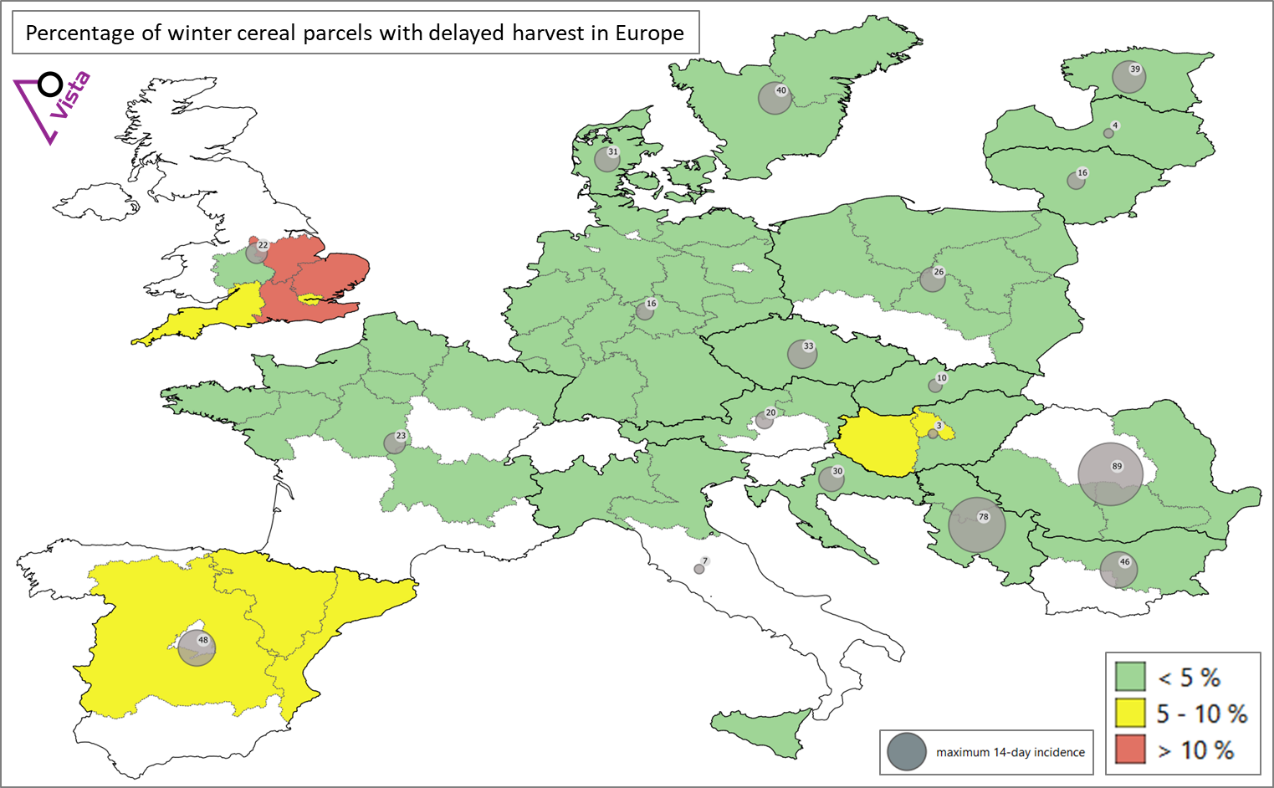
If you want to get a more in depth look at the results just click here. The data can also be found at the FoodSecurity-TEP and on ESA’s RACE (Rapid Action on Coronavirus and EO) platform.
Apr 2021
YPSILON product in 2021 also includes crop status information.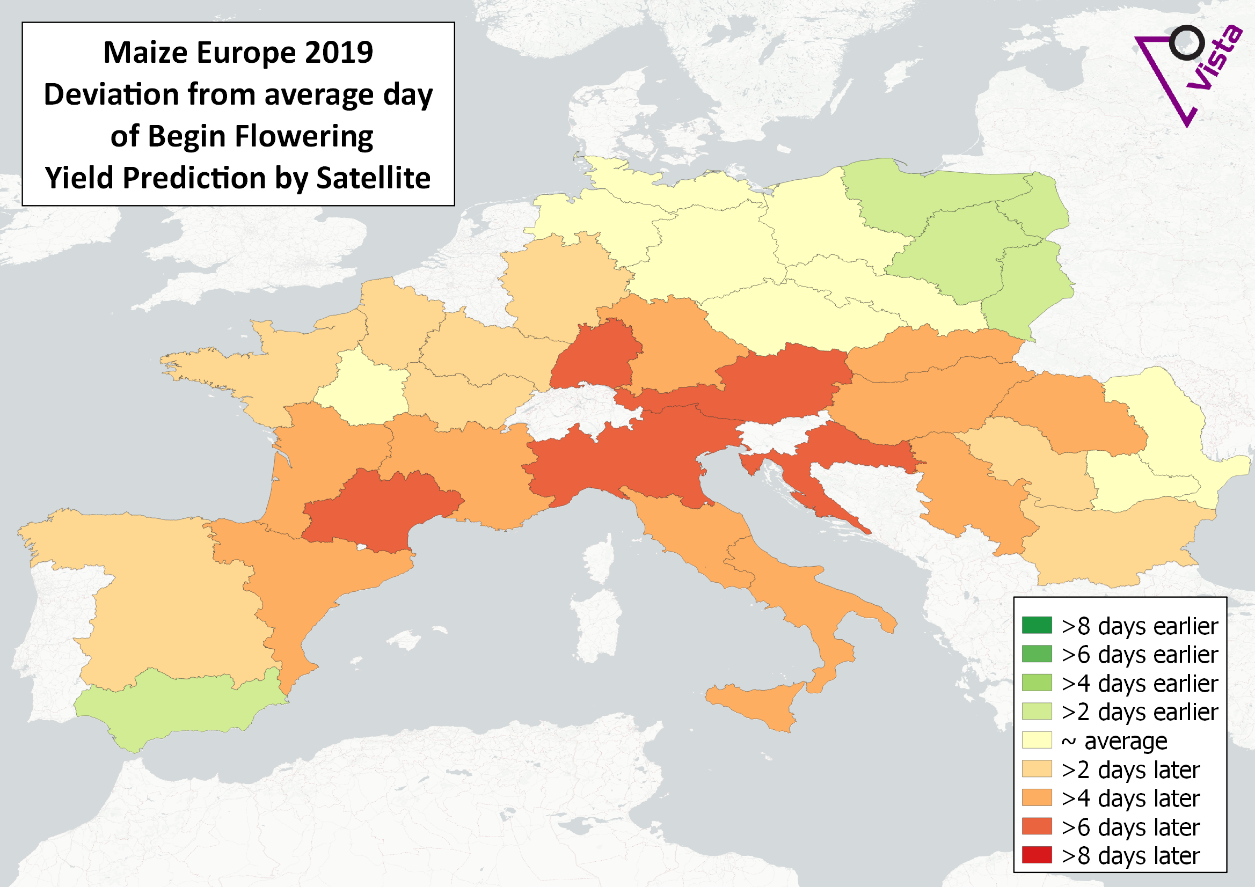
Oct 2020
The final yield prediction obtained from YPSILON model has achieved a high positive correlation compared to
the Eurostat statistics. This confirms the accuracy of our yield estimations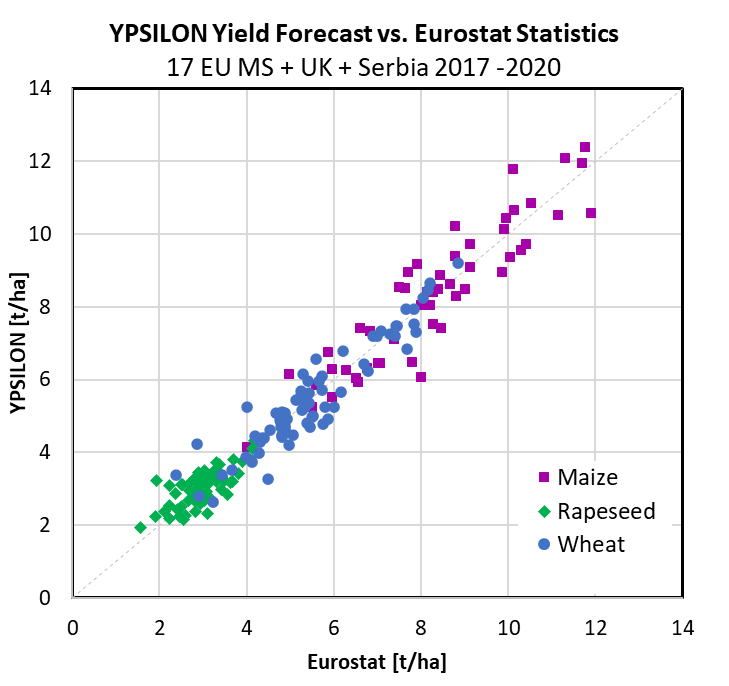
May 2020
On May 18th, YPSILON® starts into its first Europe-wide season! Find the press release here
Mar 2020
VISTA successfully completed three years of tests for 19 European countries and the years 2017 to 2019. The YPSILON model forecasted both crop failures and record yields about 2-4 weeks earlier than the average market estimate!
Do you want to know what is going in the Ypsilon headquartes? Just follow us on Twitter and Linkedin. Don't miss the chance to get up-to-date information for better decision making